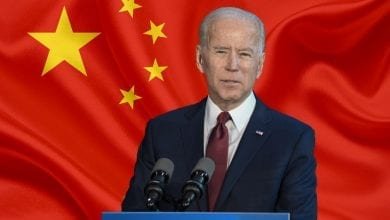More Stimulus Is Not Needed
Recently released data about jobs, retail sales, and industrial production indicate that not only is more stimulus not needed but any more stimulus will be counterproductive and will cause more severe problems in the future. That’s probably not enough to stop Congress from passing another multi-trillion-dollar package.
When the steep but very short-lived recession in March and April of last year ended, the massive nearly $4 trillion of stimulus packages were enough to quickly lead the nation to a robust recovery. Beginning last May, the sharp V-shaped recovery meant that almost half of the jobs lost during the recession had been recovered by last fall.
Then the virus flared up again. The number of new cases skyrocketed reaching a daily number in excess of 300,000 cases. Many states maintained their shutdown. These states included New Jersey, New York, Pennsylvania, Illinois, Michigan, California, Washington, and Oregon. These states account for more than 30% of the country’s GDP.
Even with those shutdowns, the economy grew at a healthy 4% annual rate in the fourth quarter of 2020. This followed a 31% increase in the third quarter.
As the Trump vaccines began to be administered, the number of new cases plummeted to around 50,000 per day by early March. Most of the closed states began to at least partially reopen. That increased economic activity. It looks like the first quarter of 2021 will show GDP growth of at least 5%. For the total year 2021, assuming the current rate of vaccinations continues, growth should hit 7%.
That will happen with no additional stimulus being passed. The 7% annual GDP growth rate will be the best rate since 1984. While admittedly there is still more growth needed, there is no need for more stimulus now.
Recently released jobs numbers for February indicate 448,000 private-sector jobs were created (government employment fell by 69,000 meaning the net monthly job gain was 379,000). As the number of new virus cases continues to fall and more of the economy reopens, the robust growth will lead to a further increase in new jobs. The unemployment rate will fall to about 5.5% by year-end.
The current unemployment rate is 6.2%. Admittedly, it is really much higher when the number of discouraged workers is added. But the rapid economic growth and the resulting increases in employment indicate that the economy is about to soar.
Any more stimulus will add to this year’s budget deficit and will raise the public debt. If the current $1.9 trillion stimulus package is passed, the public debt will reach nearly $30 trillion, which is almost 50% greater than one year’s GDP. Most economists will say when the public debt exceeds one year’s GDP, problems will result.
What are the problems?
First, the annual interest payments on that debt, even at today’s historically low interest rates, will be about $400 billion, almost 10% of non-stimulus government spending. Even more concerning is the capital shortage that a huge public debt could create.
Since the government has no mechanism in place to ever repay this debt, the annual interest expense will rise significantly as interest rates rise in the future. And there is $30 trillion pulled out of capital markets, meaning there may not be enough capital available to business as they try to expand to meet the rapidly increasing demand resulting from the robust growth.
If business can’t raise capital to expand, the only thing left to do is raise prices to meet the higher demand. This results in higher inflation with slower future growth. That’s a condition economists refer to as stagflation: a stagnant economy with rapidly rising prices. The U.S. has not experienced this in 40 years.
Inflation will worsen from President Joe Biden’s war on fossil fuels. If you have purchased a gallon of gasoline lately you probably noticed that you paid $.50 to $.75 more per gallon. As higher energy prices ripple through the economy, inflation will worsen.
Inflation will worsen further if the Federal Reserve decides to reduce the negative impact of deficit spending on capital markets. In that case, they will simply print more money, which could be very inflationary.
Politically, it may be popular to once again give Americans free money. If the current stimulus package is passed, some families may have gotten as much as $14,000 in stimulus. From an economic standpoint, this will cause more harm than good.
At this point, the smart action would be to reopen the economy as safely as possible without any additional stimulus. Having the federal government spend more money they don’t have will overheat the economy, which will lead to higher inflation, higher interest rates, a huge increase in the public debt, and eventually slower long-term economic growth.
That doesn’t benefit anyone.



